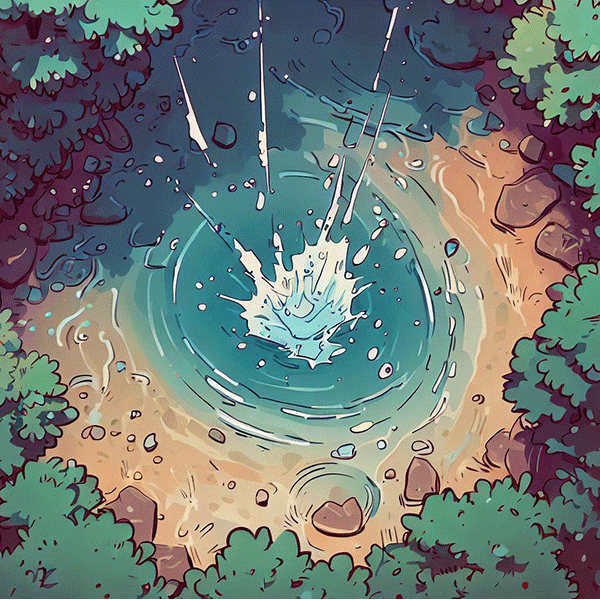The Invisible Energy Movers
Imagine you’re at a calm pond and you toss a pebble into the water. The energy from the pebble makes ripples that spread across the water – that’s a wave! In science, a wave is like a messenger. It travels through space and time, carrying energy from one spot to another without moving anything else.
Let’s Learn About the Parts of a Wave
- Crest: This is the highest point of a wave, just like the top of a hill or the highest point on a swing – whee!
- Trough: This is the lowest point of a wave, like the bottom of a slide.
- Wavelength: This is the distance between two crests or two troughs. It’s like measuring the gap between two jumps on a trampoline.
- Amplitude: This is how high the wave is from its middle line to the crest. The more energy a wave has, the higher its amplitude. It’s like the difference between making a big splash and a little ripple in a pond – splash!
- Frequency: This is counting the number of waves that go past a certain point in a set amount of time. It’s like counting how many times your friend rides past you on their bike – speedy!
Meet the Two Main Types of Waves
- Mechanical Waves: These waves need something to travel through, like air or water. Sound waves are an example of this. They’re created when something vibrates and these vibrations travel through the air, hit our eardrums, and our brains understand this as sound.
- Electromagnetic Waves: These are the independent ones in the wave family. They don’t need anything to travel through; they can zoom through empty space at the speed of light – super fast! Light waves, microwaves, X-rays, and radio waves are all part of this group.
How Waves Affect Our Lives
- Light Waves: They help us see everything around us and they’re also responsible for all the beautiful colors we see.
- Sound Waves: These let us hear music, voices, and all kinds of sounds around us.
- Microwaves: These are what heat up our food quickly and easily.
So remember, waves are the hidden helpers in our everyday lives. By understanding them, we can understand how the world around us works and the science behind our modern gadgets. So next time you’re listening to your favorite song or laughing at a funny show, remember – you’re enjoying the amazing power of waves
